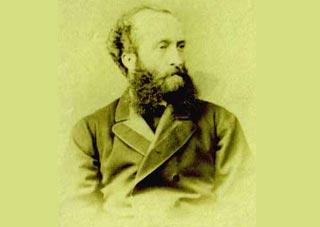
 Lyn Gallagher’s The Albert Memorial Clock is a short pamphlet on the design, building and restoration of the building after which her publication is named. It was written to mark the completion of restoration work on the Albert Memorial Clock (AMC) in 2002.
Lyn Gallagher’s The Albert Memorial Clock is a short pamphlet on the design, building and restoration of the building after which her publication is named. It was written to mark the completion of restoration work on the Albert Memorial Clock (AMC) in 2002.
The original structure was completed in 1869 to commemorate Queen Victoria’s late husband Prince Albert who died aged 42 in 1861 of Typhoid fever.
The memorial was one of many throughout the UK that celebrated the life and legacy of the Prince Consort, the most famous being the Royal Albert Hall.
Gallagher’s book is well written and gives some interesting insights into the AMC’s construction, design and cultural legacy.
She notes that Belfast was very quick to build a memorial to Albert, the AMC being completed two years before the Albert Memorial in Kensington Gardens, London.[1]
Albert was popular because of his well-known interest in arts, science and social problems.[2] The town decided to build this memorial out of a growing sense of civic confidence but also out of strong local veneration for the Royal Family.[3] The location chosen for construction was where Victoria and Albert had landed in Belfast during their visit in 1849.[4]
She goes on to outline how the competition to consider designs for the memorial caused major controversy at the time. A General Committee of Subscribers had been established to coordinate public subscriptions and contributions to the memorial and oversee the design and construction. A design competition was held and 76 designs received.[5]

A sub-committee of the General Committee was established to evaluate the designs and make a recommendation to the General Committee on the winning entry.
The Sub-Committee chose a design by J.M Barre as the first choice followed by a design by Sir Charles Lanyon in second place.[6]
However, the General Committee selected Lanyon’s design as the winning entry. Lanyon was the premier architect of his time in Northern Ireland having designed the Crumlin Road Gaol (1845), Queen’s University Belfast (1849) and Scrabo Tower (1855) in County Down. He was also a well-connected Conservative politician and activist.[7]
This decision caused a public outrage as the General Committee had ignored the recommendation of their sub-committee but more importantly, Lanyon was a member of the General Committee and had also submitted a design.[8] This all suggested the process was unfair and rigged and the General Committee was forced in the face of public humiliation to accept the original subcommittee’s suggestion.[9]

The AMC was constructed in the Gothic style.[10] Barre was well known for his Gothic masterpieces such as the Ulster Hall and Danesfort House on the Malone Road, the present-day location of the US Consulate in Northern Ireland.[11]
Once constructed, the AMC developed a lean. This was noticed as early as the 1880s. It was said the AMC had both the ‘time and the inclination.[12]
The lean was caused by its construction on soggy reclaimed Belfast sleech. The AMC weighted 2,000 tonnes and the ground it was constructed on was not firm enough to take the weight.[13] Throughout the 20th century, there were conservation attempts and underpinning work and this finally ended with the completion of works in 2002.[14]
This is a well written and informative work and is the go-to source for the history of the AMC.
Notes:
[1] Lyn Gallagher, The Albert Memorial Clock (Belfast: The Ulster Architectural Heritage Society, 2004), p.13.
[2] Ibid., p.13.
[3] Ibid., pp.10, 13.
[4] Ibid., p.2.
[5] Ibid., p.15.
[6] Ibid., p.15.
[7] Ibid., p.16.
[8] Ibid., pp.16-17.
[9] Ibid., p.18.
[10] Ibid., p.29.
[11] Ibid., pp.24. 25.
[12] Ibid., p.35.
[13] Ibid., p.56.
[14] Ibid., pp.35-37, 57.

